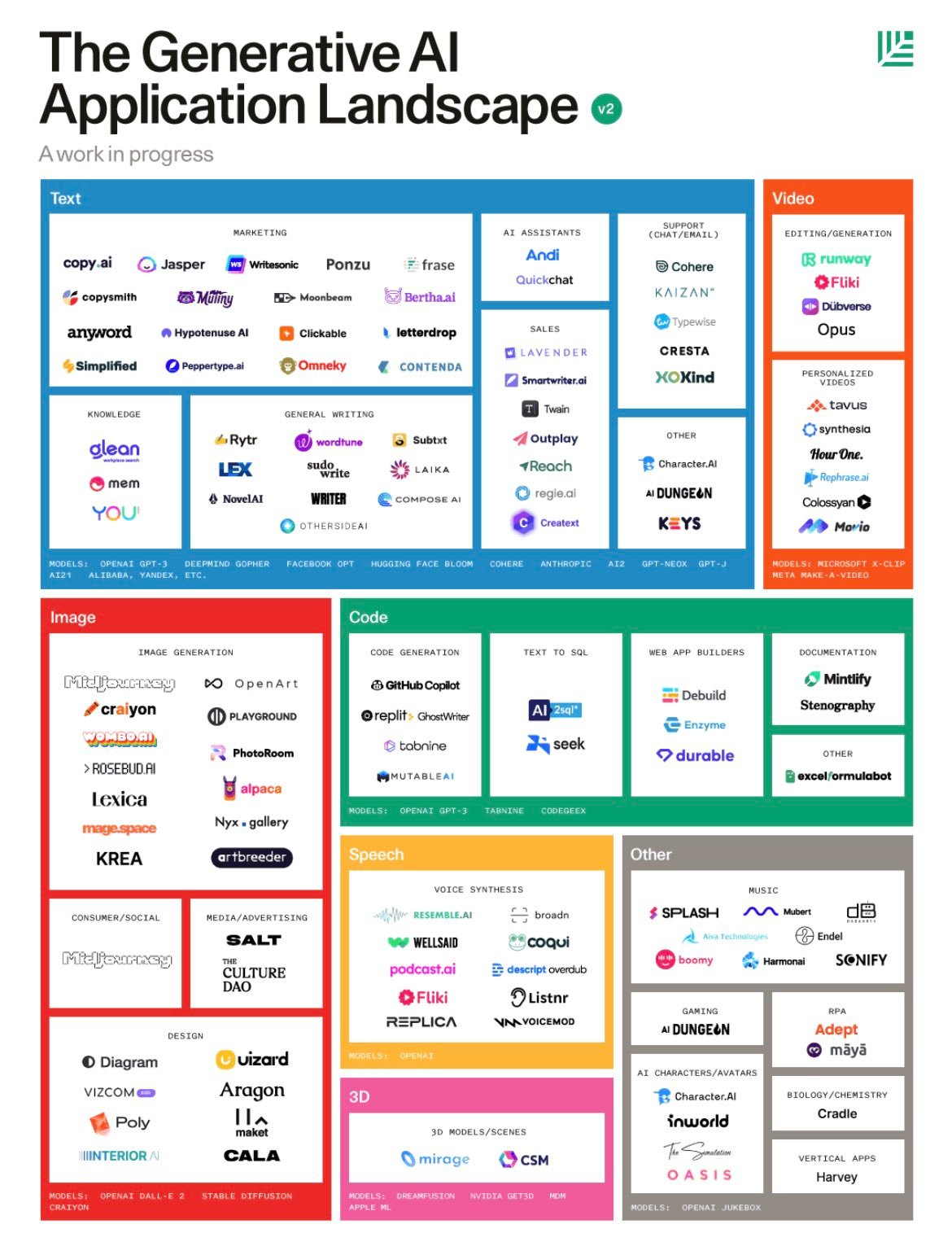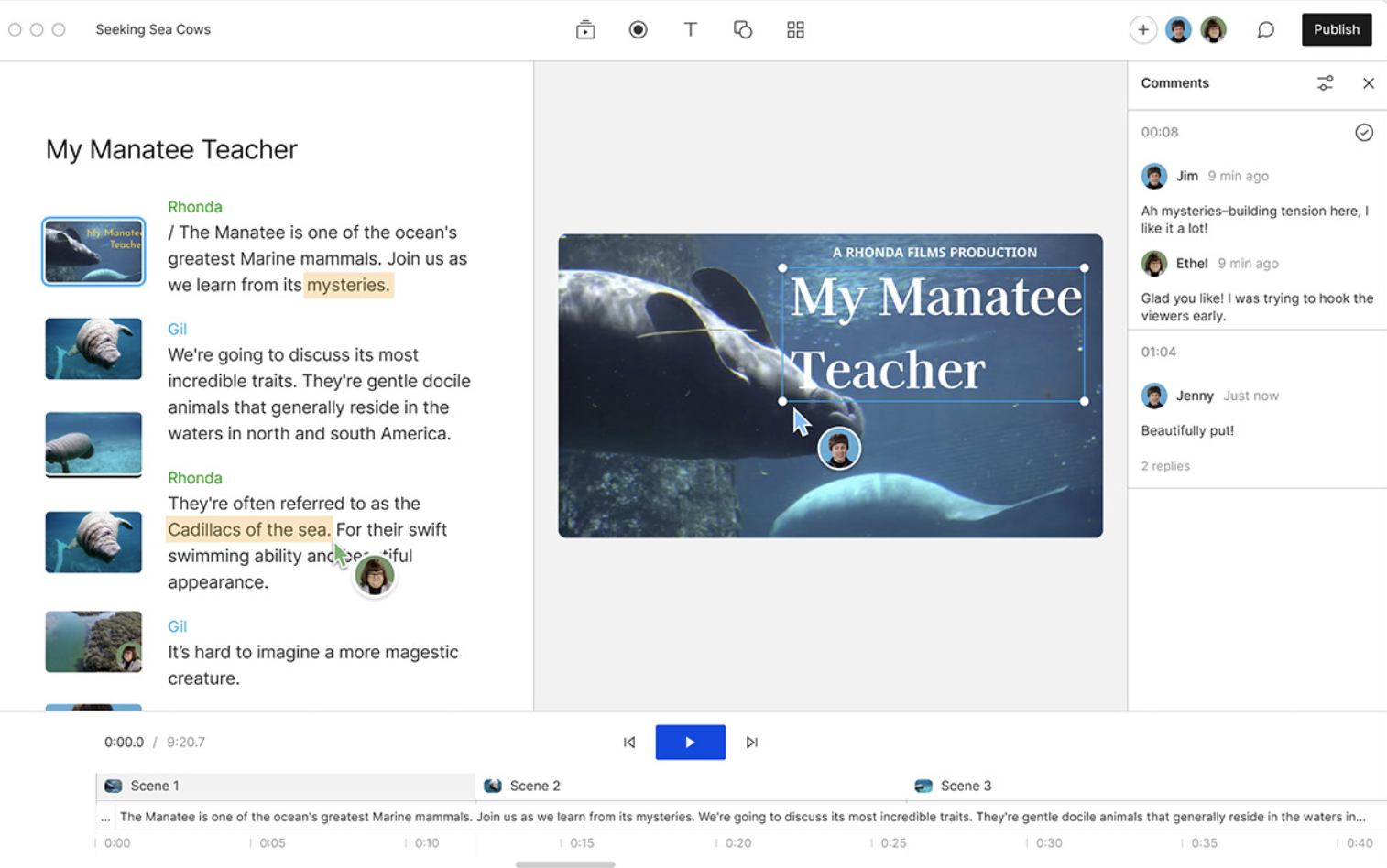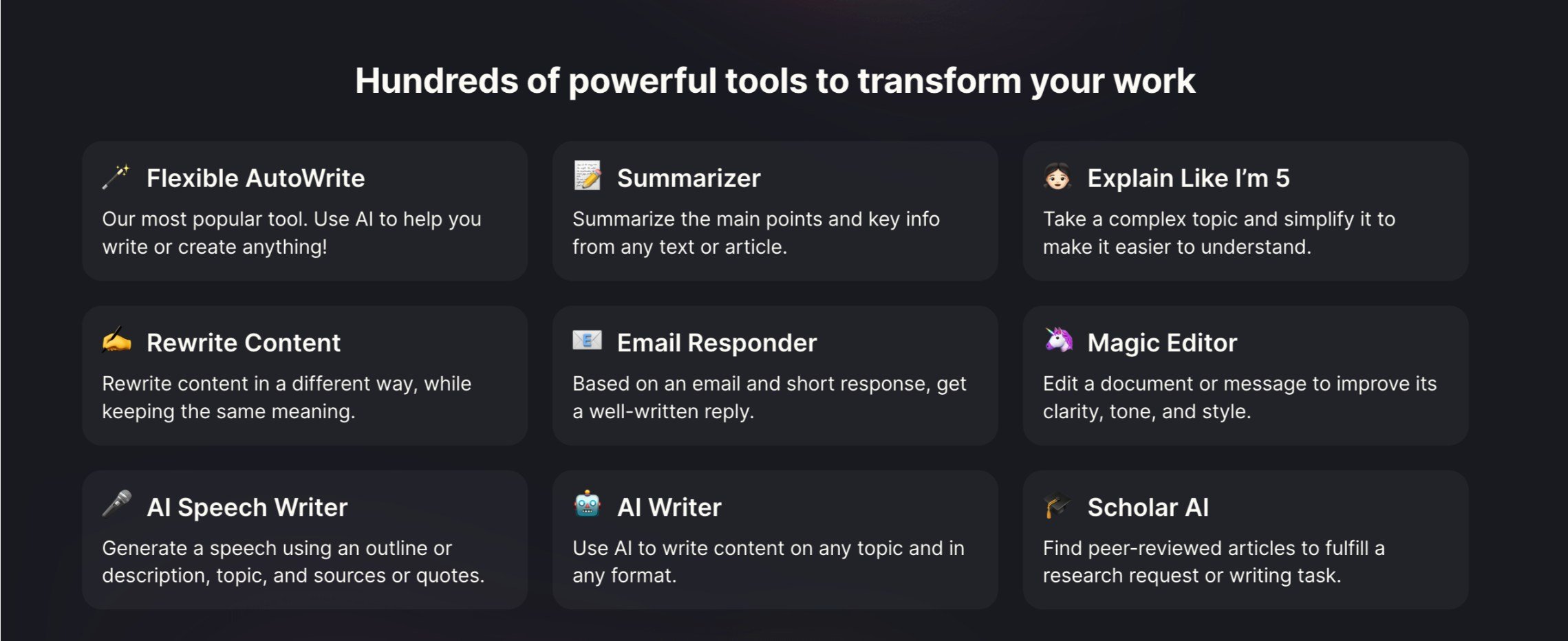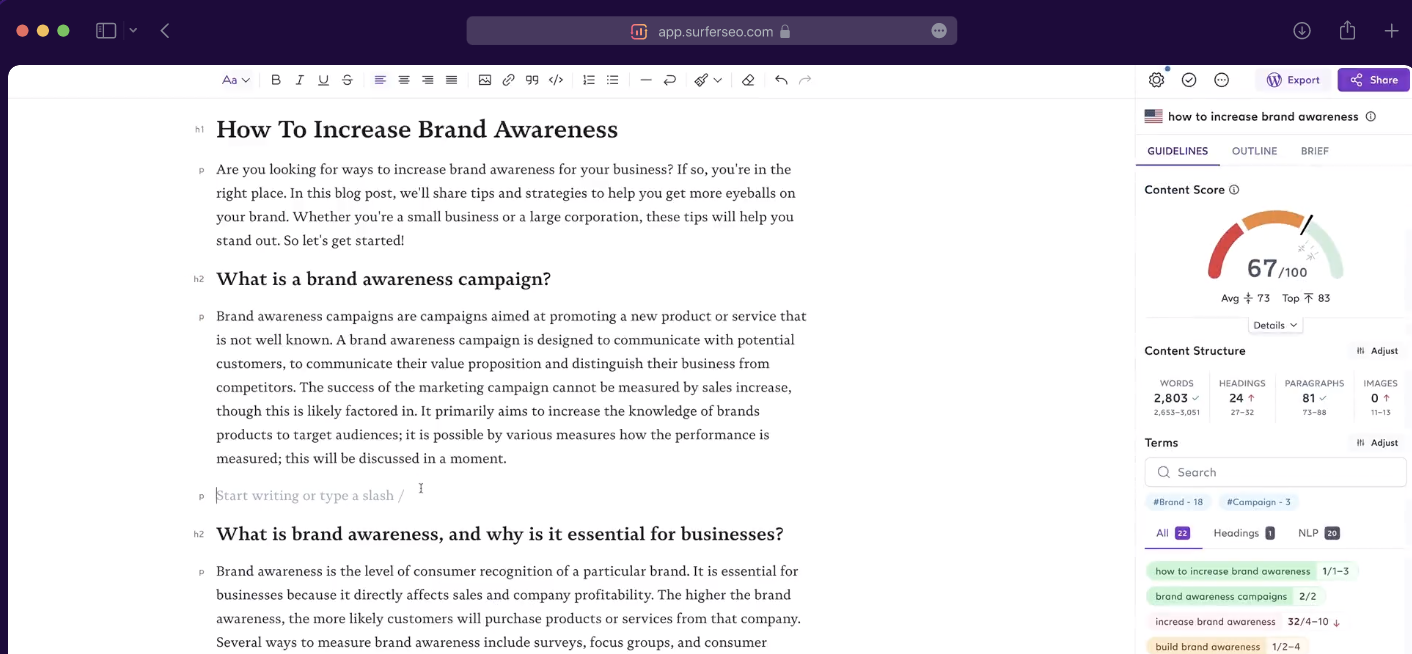Topics:
Marketing Resources Marketing Automation Sales & Marketing Technology Artificial IntelligenceSubscribe now and get the latest podcast releases delivered straight to your inbox.
5 AI tools for the modern marketer:
- Video editing tool: Descript
- Video clipping tool: Opus Clip
- Writing assistant: Hyperwrite
- Search engine optimization tool: SurferSEO
- Time management tool: Reclaim
Literally thousands of new AI tools have been released since ChatGPT burst on the scene at the end of 2022. At the same time, established brands have added AI capabilities to the platforms we already use every day.
 Source: @heyBarsee
Source: @heyBarsee
There’s no doubt that the pace of innovation has increased from a trickle to a waterfall, and that’s led to a lot of noise and chaos in the marketplace.
People are overwhelmed — and things show no sign of slowing down.
AI tools for the modern marketer
At IMPACT, we work with businesses of all shapes and sizes — which means we see dozens of industries, team structures, and verticals. And within those organizations, we’re coaching marketing teams, training salespeople, and advising senior leadership.
In short, we see a wide swath of the professional landscape.
Below are some tools we advise clients to try out to increase their efficiency and improve their output.
For each tool, I’ll explain what it does, what it costs, the pros and cons, and my impressions — and this should give you a leg up as you’re sifting through the crowded AI landscape.
Here we go.
1. Video and audio editing tool: Descript
Descript is an AI-powered video and audio editor that will transcribe your footage automatically so you can edit it just like a Word document.

How you can use it
Descript uses speech detection AI to transcribe any audio or video file you feed it. The accuracy they offer is some of the highest I’ve seen. If there are errors, industry terms, or specific names you want to ensure Descript remembers moving forward, you can add them to your own glossary to be even quicker in the future, which is cool.
Another feature I found was that you can add new scenes with one click. Simply adding a slash “/” within your script will allow you to add a new scene. Descript has thousands of clips, gifs, and images to choose from to add to your video, or you can simply create your own. Little tips and tricks like this can be found in their resource center, so users can continue to learn from one another.
The user experience is very smooth and Descript allows you to apply text-based editing to save you time and ease overall. I only see Descript getting better from here and I’d expect its competitors will follow suit in terms of text-based editing for their users.
Advantages
- The dashboard operates like a drive system, allowing for collaboration with teammates
- There's voice cloning
- Magic Menu (in the Pro tier) identifies filler works and lets you decide what to remove
- Precision editing
- There are regularly held “Descript 101” webinars that get recorded and stored in a learning hub
Disadvantages
- Transcription is about 90% accurate (This is some of the highest I’ve seen, but there is still room for improvement.)
- The voice clone can sound pixeled and robotic
- The voice clone in editing has some speech synthesis issues during long sentences
- The timeline in the video editor doesn’t let you drag/drop/slide as seamlessly as other editing tools
- You can't go into detail with keyframing and color grading, creating on-screen graphics, and/or text that you can in tools like Adobe Premiere
What it costs
There’s a free version, with Creator ($12/month), Pro ($24/month), and Enterprise tiers. Full details on their pricing page.
2. Video clipping tool: Opus Clips
Opus Clip is also a video editing tool, but with a specific purpose: To turn long-form video into digestible shorts. Think: Cut a 30-minute podcast into 10 vertical-framed 30-second short-form videos. As an example, here's a clip we made with Opus.
How you can use it
Like a lot of AI, Opus Clip is a multiplier. If you're trying to generate a lot of content, a tool like Opus can get videos out the door at a tremendous rate. While you won't have as much control as you do in a traditional editor like Adobe Premiere, the clips are serviceable — and you can do minimal editing within the platform.
We all know that short-form video is crucial for engaging with your audience, and Opus can help you speed that process up.
Users report that the tools has improved significantly of late, so if you tried this in the past and were unimpressed, give it another look.
Advantages
- AI can scan your full video to find relevant clips and hooks
- Face tracking software is very accurate
- Can help you smoothly cut filler words
- Provides accurate captions and some basic animation
- You can use AI to insert b-roll into clips
Disadvantages
- Chosen clips are not always the best
- Editing software can be clunky at times
- B-roll tool struggles to understand context
What it costs
There's a free version, then you can choose Starter ($9/month) or Pro ($29/month)
3. Writing assistant: Hyperwrite
The best AI tools feel collaborative in nature. That way, the user has more control over the finished output. Hyperwrite is an AI writing assistant that learns how you write so it can continually improve what it generates.
How you can use it
Hyperwite offers a full suite of writing services, from full generation to translation to summarizing. You can use it write a new blog post from scratch, draft a follow-up email. do research, or craft a social post. For marketers, this can be a god-send.

There are tons of AI writing tools on the marketplace right now, from well-established do-it-alls like ChatGPT to specific ones like Jasper. Hyperwrite is my go-to for the quality of what it produces and its ease of use. Plus, as a Chrome extension, you can use Hyperwrite across all platforms.
Advantages
- Simple to use across all platforms
- Adapts to your voice to mimic the style and tone you write with naturally
- Easily expand a short piece of text into something more fleshed out
Disadvantages
- Credit limits on the basic plan may not be enough for your needs
- Hyperwrite gets outperformed by ChatGPT on some writing tasks
- Some users have complained about the speed of the output
What it costs
Premium: $20/month, Ultra: $45/month
4. Search Engine Optimization tool: SurferSEO
Surfer SEO is a cloud-based on-page optimization tool that allows you to analyze and compare your own pages against what currently ranks in SERPs.

How you can use it
Through my experience with a variety of writers across a variety of industries, SEO seems to be the one thing they all overthink.
I recommend this tool quite often to my clients as they try to rank in Google. I don’t see this as a tool someone would need forever, but a great tool to utilize if you are new to SEO and don’t have the bandwidth to learn everything all at once.
I specifically love the actionable feedback it lists out for you in the SEO checker on the dashboard. This information is very direct and doesn’t leave you feeling unsure as to what you need to do to improve your content.
Advantages
- Surfer Academy offers a library learning resources
- Integrates with Google Docs and WordPress
- Edit and write right within the tool to receive your SEO score
- Analyze and compare your own pages to what ranks well already, with 500+ ranking factors
- The Content Planner tool will find related keywords and arrange them in cluster format so that you can easily create content and do internal linking
Disadvantages
- No free trial option, only a 7-day money-back guarantee
- The Domain Planner tool only supports the top 100 pages (not all pages on your site)
- The WordPress integration doesn’t work with accuracy 100% of the time
- Keyword research isn’t as intensive or descriptive as it could be
- The SERP Analyzer tool includes a lot of unnecessary data points, which can be overwhelming to make sense of
What it costs
Tiers include Essential ($89/month), Scale ($129/month), Scale AI ($219/month), and Enterprise.
5. Time management tool: Reclaim
Reclaim is a smart scheduling app for Google Calendar that uses artificial intelligence to automatically build the perfect schedule for your priorities every week.

How you can use it
I trialed this tool for a few weeks and found it extremely helpful. With that said, I am an overly organized, color-coded planner type of individual, so I may not be the best use case for Reclaim. However, I now recommend this to my clients all the time.
It doesn’t matter what industry or what department you work in — a lot can go wrong if your calendar is chaotic. Having everything organized in one spot gives you the freedom to maximize your availability without clogging up your calendar.
The coolest part, I think, is when a meeting is canceled or something shifts in your calendar, Reclaim will auto-reschedule it for you at an opportune time.
And lastly, Reclaim will adjust your events from “Free” to “Busy” as you get busier — so you stay flexible, but not overly available.
Advantages
- Reclaim 101 offers live educational webinars
- Integrates with Google Calendar, Slack, Click Up, and more
- Sync unlimited calendars (and availability) to prevent conflicts
- Auto-block time for tasks and routines and find the best time for 1:1 meetings
- Add breaks and travel time around meetings
- Reprioritize your entire calendar easily when things change
Disadvantages
- Does not integrate with Outlook (yet)
- There is a learning curve when you first start using the tool
- You cannot access all of the functions from your own calendar — you will have to have the app open in another tab to have full access
- Notifications can become overwhelming quickly, though they can be adjusted
My thoughts
I trialed this tool for a few weeks and found it extremely helpful. With that said, I am an overly organized, color-coded planner type of individual, so I may not be the best use case for Reclaim. However, I now recommend this to my clients all the time.
It doesn’t matter what industry or what department you work in — a lot can go wrong if your calendar is chaotic. Having everything organized in one spot gives you the freedom to maximize your availability without clogging up your calendar.
The coolest part, I think, is when a meeting is canceled or something shifts in your calendar, Reclaim will auto-reschedule it for you at an opportune time. And lastly, Reclaim will adjust your events from “Free” to “Busy” as you get busier — so you stay flexible, but not overly available.
What it costs
Lite (free for life), Starter ($8/month per user), Business ($12/month per user), Enterprise ($18/month per user).
The tool is only as good as the person who uses it
While these tools open up amazing possibilities, remember that they, themselves, are not a strategy. They are not insight or creativity, either.
Let these tools enhance and speed up the work you do, but don’t expect them to do the job for you.

And remember, the AI landscape is shifting by the day. These tools will improve, others will emerge, and category kings will eventually come to dominate.
Keep experimenting and learning.


Order Your Copy of Marcus Sheridan's New Book — Endless Customers!

